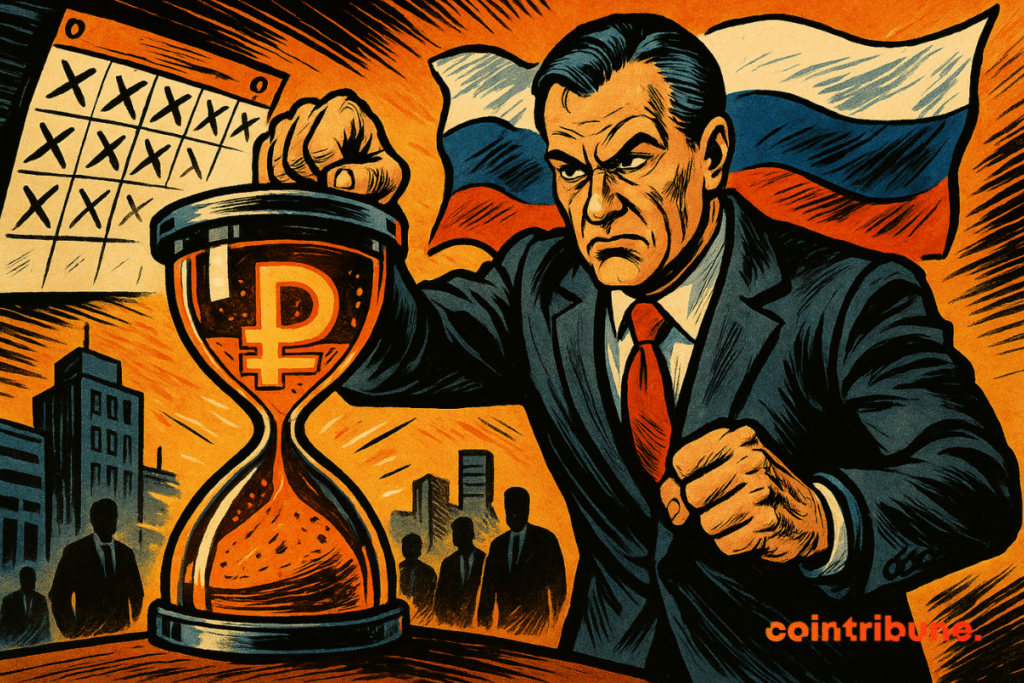Russia Forces Digital Ruble Adoption: Banks & Retailers Must Comply by 2025
Moscow tightens its grip on financial infrastructure as the digital ruble becomes mandatory nationwide.
No opt-outs, no alternatives—state-backed CBDCs enter the execution phase.
The Kremlin’s Cashless Crackdown
Banks and major retailers now face strict deadlines to integrate the digital ruble—or risk penalties. The move accelerates Russia’s push for monetary control amid tightening sanctions.
Retail Resistance? Not an Option
From corner stores to corporate giants, compliance isn’t optional. The Central Bank’s playbook leaves zero wiggle room—adopt or get sidelined.
Finance’s New Iron Curtain
While bureaucrats cheer ‘innovation,’ skeptics see a tool for surveillance masquerading as progress. Another win for centralized power—disguised as digital convenience.

In brief
- Starting in 2026, major Russian banks and retailers generating more than 120 million rubles must accept payments in digital rubles.
- Progressive rollout until 2028, aiming to generalize the use of central bank digital currency (CBDC) across all commerce.
- Declared objective: to strengthen state control over financial flows while reducing dependence on foreign payment infrastructures.
A High-Tension Monetary Transformation
Russia no longer hesitates: the digital ruble is moving out of the laboratory to assert itself in the veins of national commerce. It is no longer a pilot project. It is a marching order. From September 1, 2026, the country’s major banks will be required to ensure their clients can use this dematerialized version of the national currency. And this is just the beginning.
In the same breath, retailers generating over 120 million rubles annually, roughly 1.9 million dollars, will be required to open their infrastructures to payments in digital rubles. This threshold targets the heavyweights of retail commerce, from food chains to electronics distributors. There is no question of hiding behind a vague transition: the obligation is clear, calibrated, progressive, and relentless.
This strategic choice propels Russia into an unprecedented monetary control scheme at this scale. While the classic ruble sees its last moments as the pivot of exchanges, the digital ruble does not just invite itself; it imposes itself with the authority of a decree.
The Centralization Timeline
The Bank of Russia, as conductor of the transition, has laid out a detailed roadmap. After the main banks and major retailers beginning in 2026, universal licensed banks and businesses exceeding 30 million rubles in revenue must comply by September 2027. Finally, in 2028, almost the entire economic fabric, except for very small entities, will have to adapt to the era of the digital ruble.
Each stage aims to expand usage without causing a sudden rupture. Yet, behind this organized façade, the operation reveals a broader goal: finely-tuned, centralized, and potentially intrusive control of economic flows. Universal QR codes, managed via the National Payment Card System, will become the standardized interface between the user and the currency.
But this shift is not without friction. Initially planned for July 2025, the launch was postponed to mid-2026. A technical delay? Yes. But more importantly, a need to smooth out political and banking tensions in a project crystallizing the conflict between technological innovation and institutional control.
Russia: An Economic Choice or an Ideological Lock?
Beneath this technocratic advance lies a true ideological reconfiguration. Russia, by deploying its digital ruble, is not just seeking to modernize its payments: it is building a monetary wall.
In a context of international sanctions, this choice strengthens its financial autonomy while reducing exposure to Western banking systems. But critics worry: a digital ruble issued and managed exclusively by the central bank drastically limits individual economic freedom.
Unlike Bitcoin or other decentralized cryptocurrencies, the digital ruble is traceable, programmable, and potentially blockable. A perfect tool for vertical governance, less so for an innovative ecosystem. Russia is thus walking a tightrope: modernizing without liberalizing, digitizing without decentralizing. In short, integrating the codes of the blockchain while excluding its spirit.
Maximize your Cointribune experience with our "Read to Earn" program! For every article you read, earn points and access exclusive rewards. Sign up now and start earning benefits.

